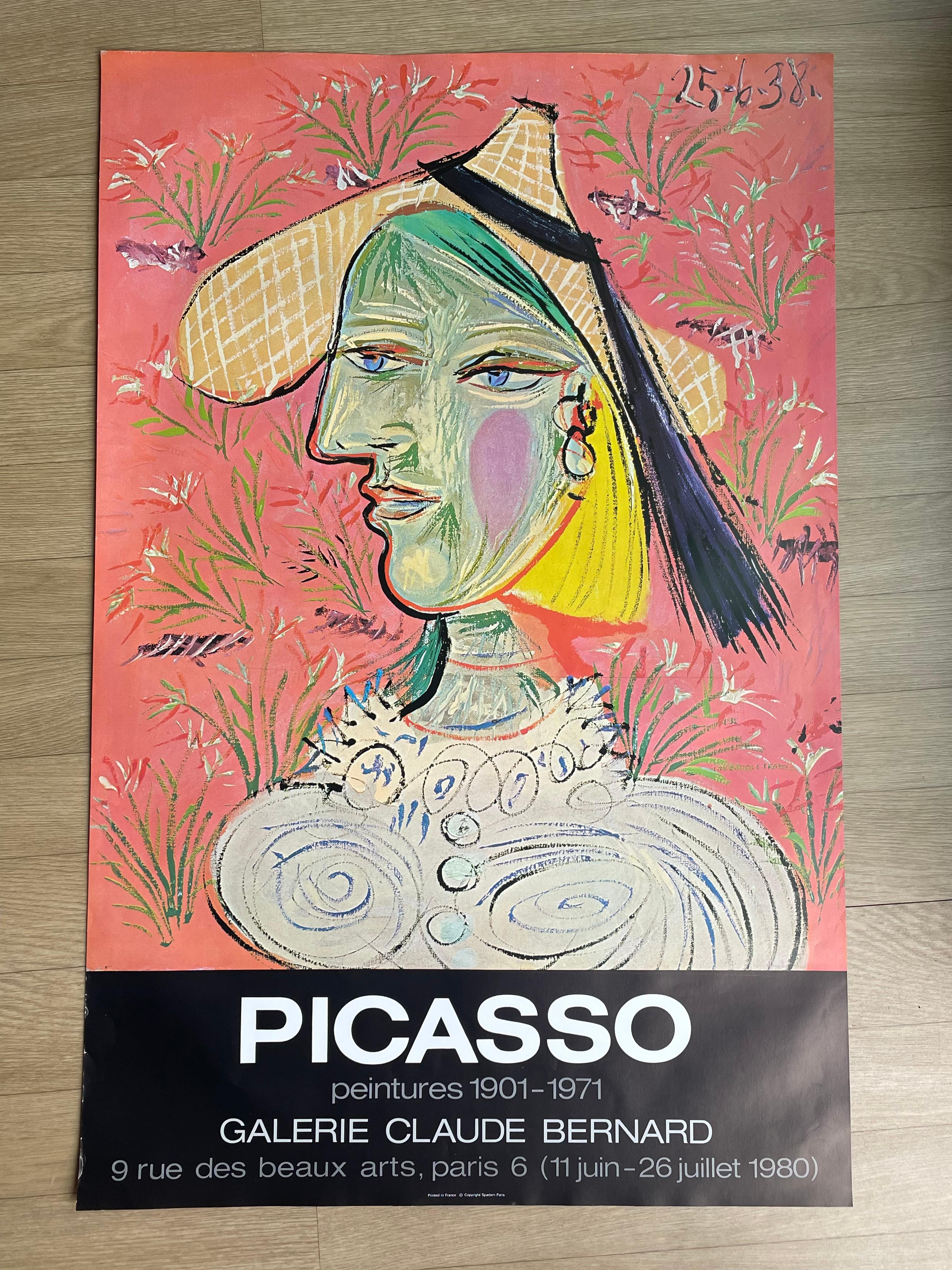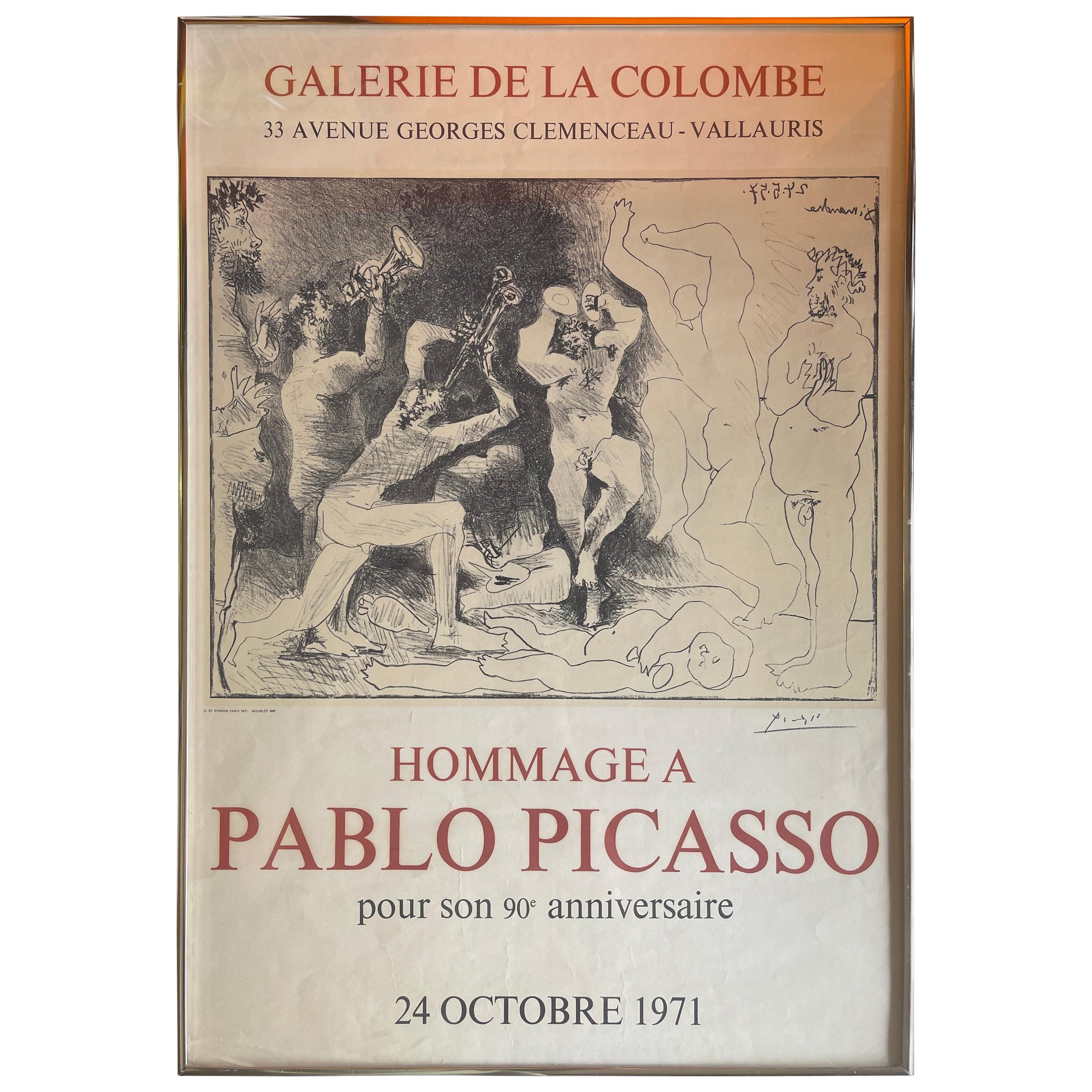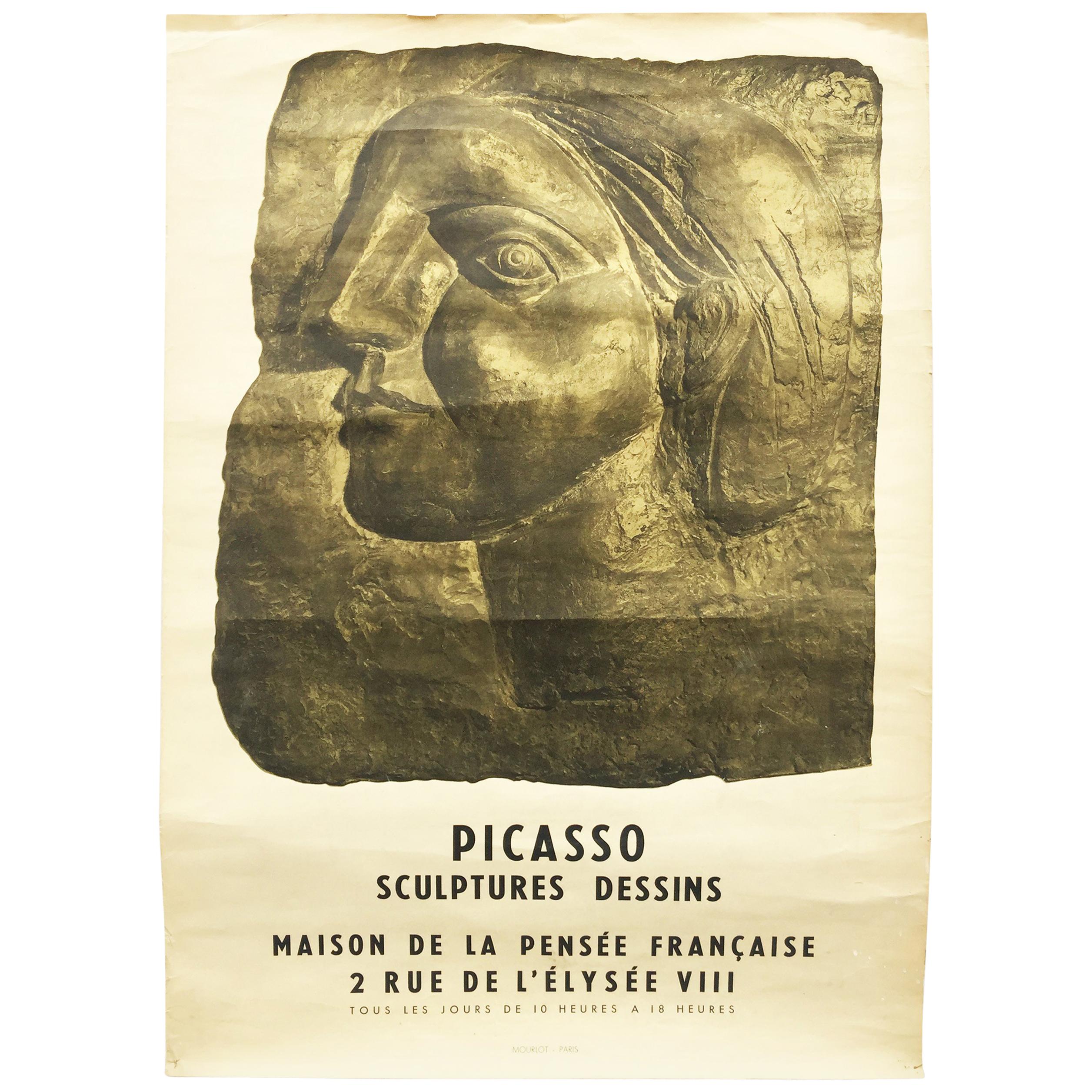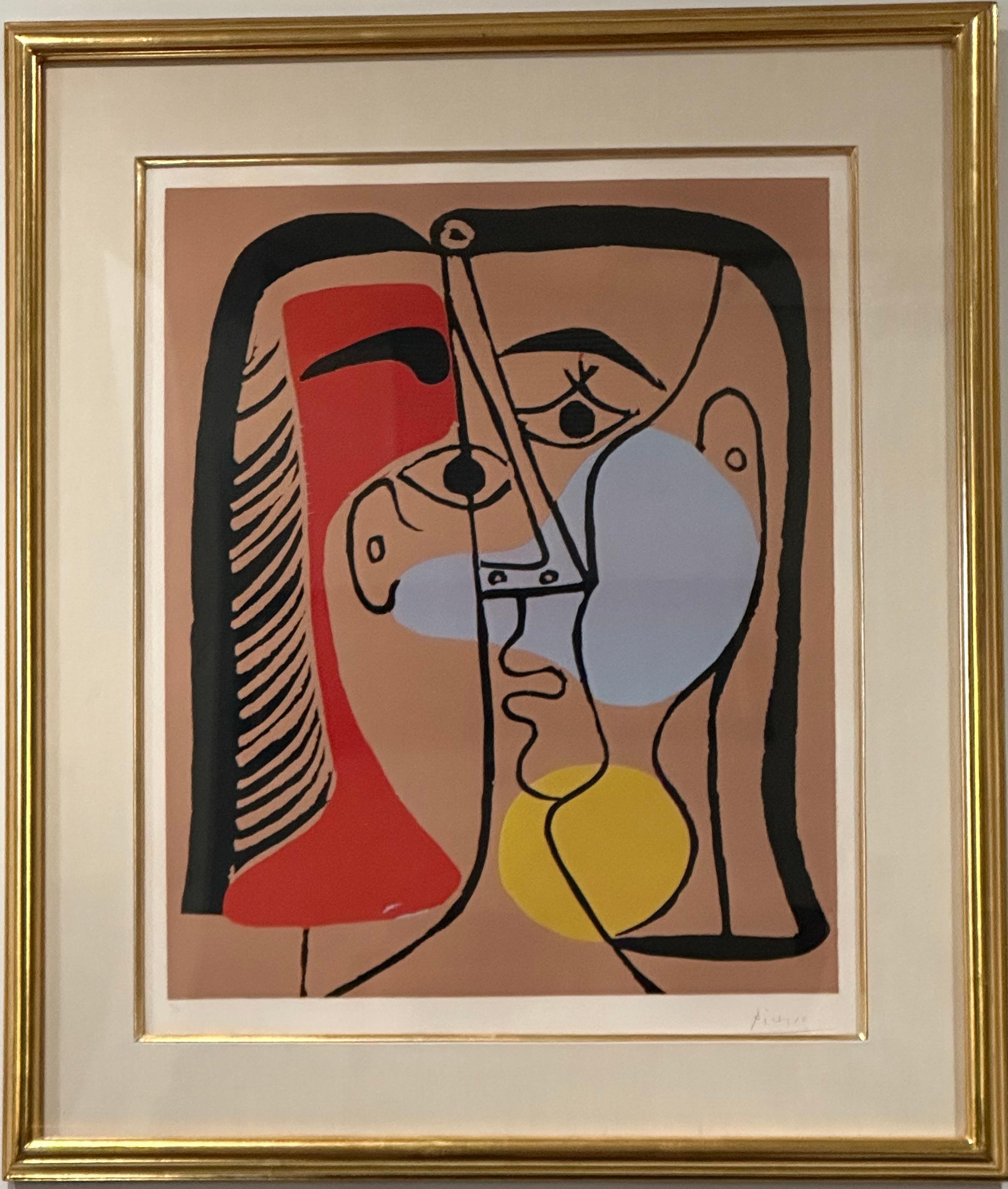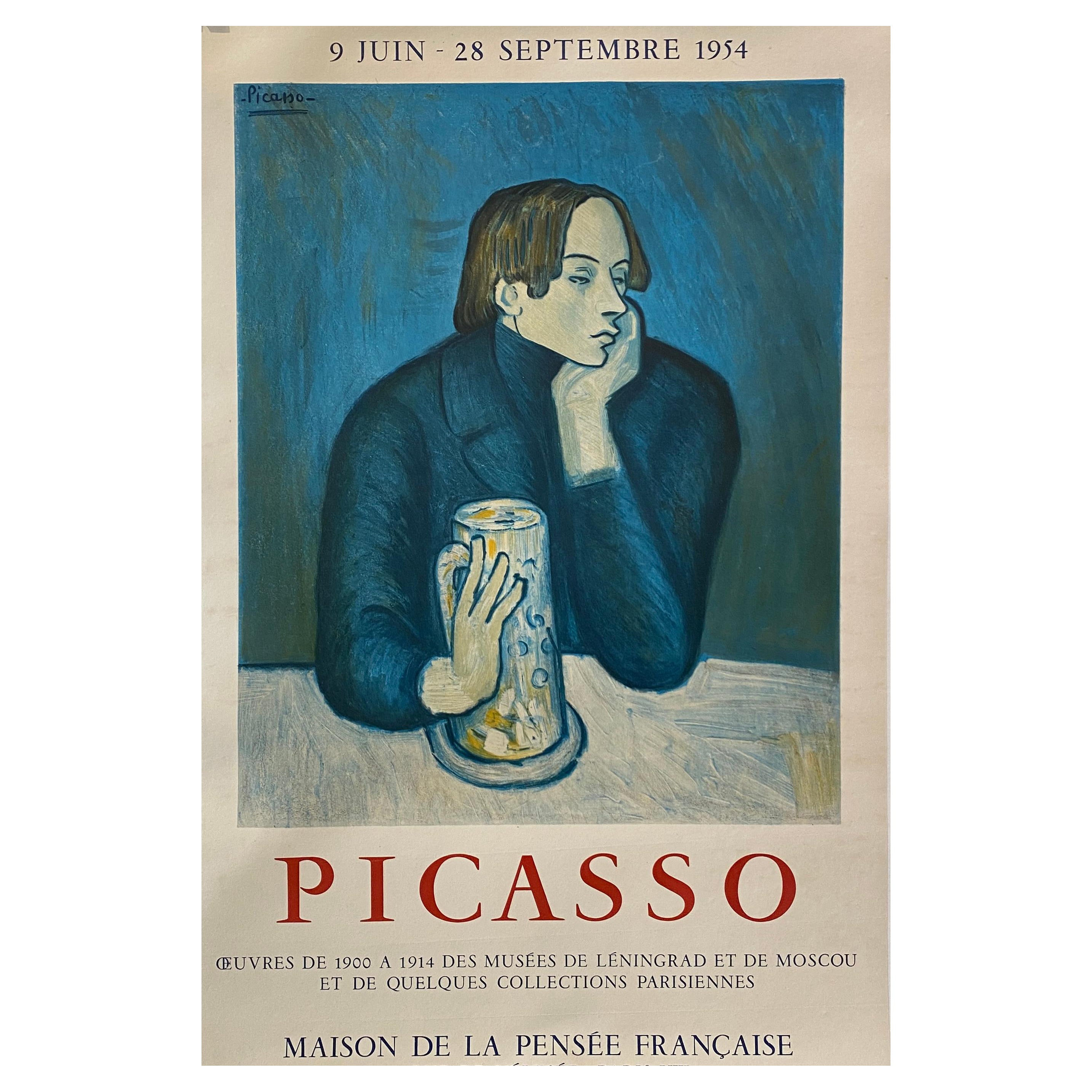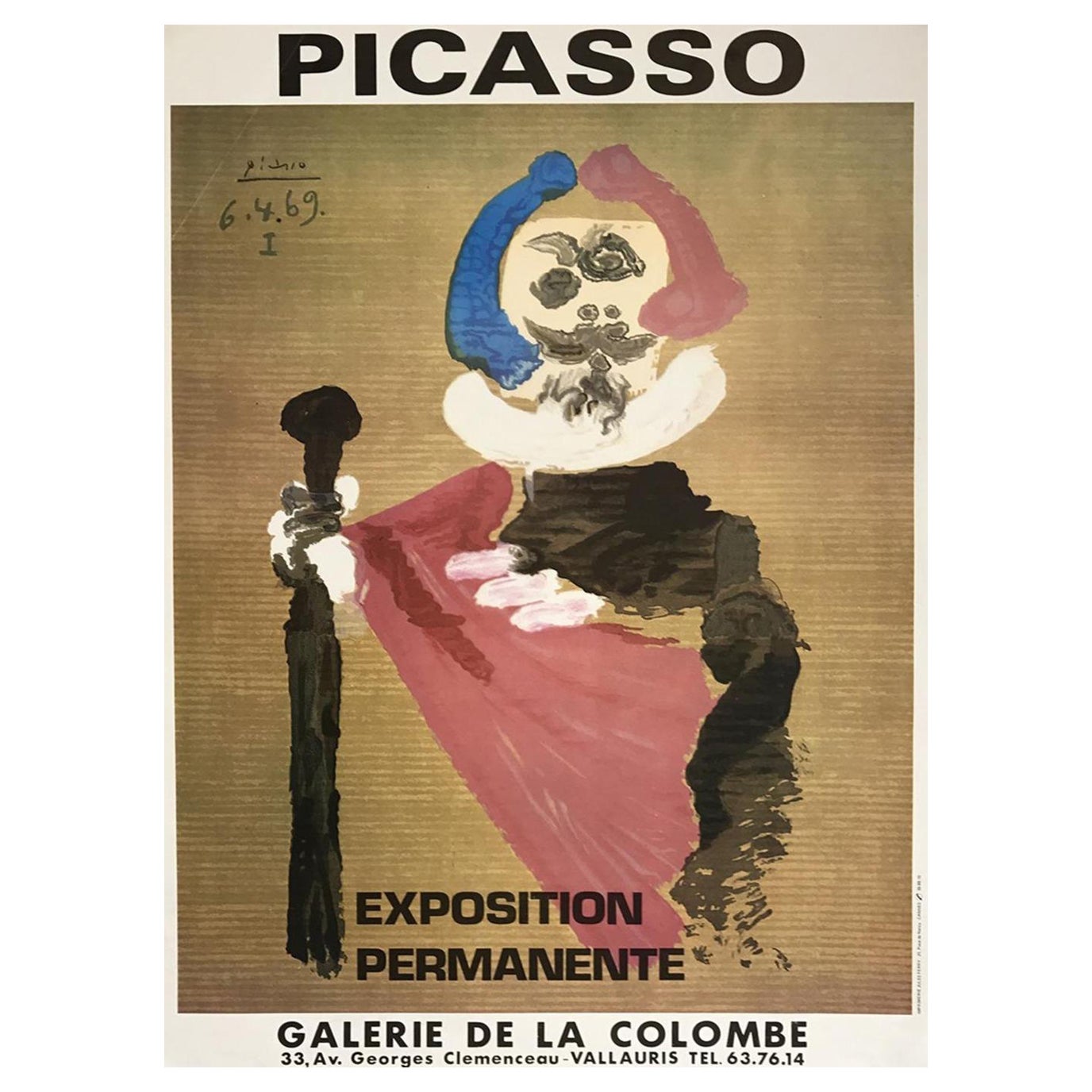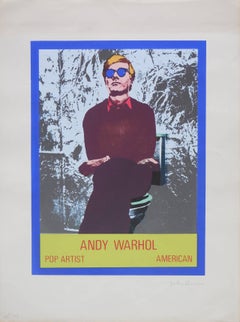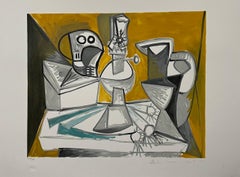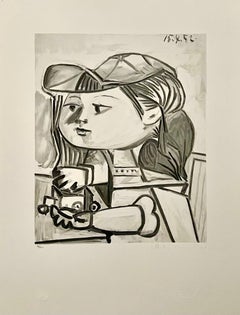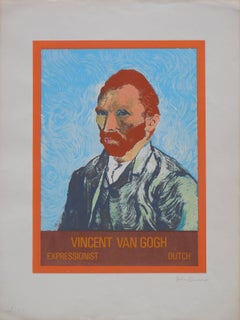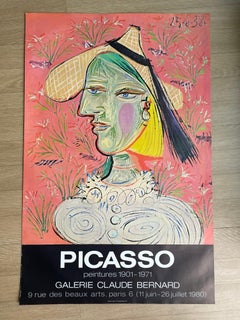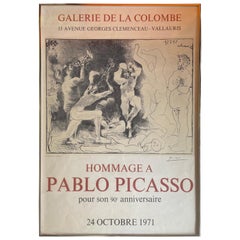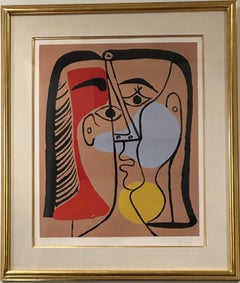Items Similar to Vintage 1960s Pablo Picasso Photo Silkscreen Serigraph Pop Art
Want more images or videos?
Request additional images or videos from the seller
1 of 11
John BrowerVintage 1960s Pablo Picasso Photo Silkscreen Serigraph Pop Art1968
1968
$750
£581.40
€658.09
CA$1,073.41
A$1,171.33
CHF 607.99
MX$14,013.96
NOK 7,717.32
SEK 7,228.71
DKK 4,915.74
About the Item
This is for a Photo Silkscreen Serigraph it is Titled Pablo Picasso Cubist Spanish. light creasing to paper outside of image
John Brower worked in Chicago as a billboard designer for 12 years. He taught art at Alverno College of Milwaukee, Wright Junior College in Chicago, the University of Illinois, and the University of Kentucky. A Pop Artist.
In John Browers' work two important things come forward: the design and the image. In the painting Indian 2 you are denied simply enjoying the background or the realistic figure in the foreground. They both on their own would make an interesting painting but Johns' insistence on putting them together leaves you with a picture scrubbed clean of indecision, so clear that you can hardly help yourself from needing to understand its meaning. John Browers' pictures are modern - no matter how instant they look you can tell they have been thought about and realized with a lot of calculation and intentionality.
He has exhibited regularly in galleries throughout the country over the past 40 years and his work is in numerous collections, including the Metropolitan Museum of Art in NYC.
Art After Art 1971. The exhibition featured works by contemporary artists who borrow and rework to their own ends famous paintings or traditional themes from the past.This exhibition consists of twenty-two paintings, drawings, sculptures, and graphics by 20th century artists , including Marcel Duchamp, Rene Magritte, John Clem Clarke, Tom Wesselmann, Roy Lichtenstein, Alain Jacquet, John Chamberlain, John Brower, Larry Rivers, Al Pounders, Joseph Cornell, Jose Luis Cuevas, and Sante Graziani. Enrico Baj, Wynn Chamberlain, Joseph Cornell, Marcel Duchamp, Sante Graziani and Saul Steinberg.
The idea of reusing earlier art is not new to the 20th Century, although it seems to have a special appeal to a number of artists working today. Pop artists scorn the inviolability of High Art and, in disregarding traditional notions of proper subject matter, choose commercial or low art. Some show a particular fondness for masterpieces in reproduction--the mass media or commercial version of art with a capital A. Following the Pop artists came the New Realists, who work from photographs. John Clem Clarke, for example, first used slides of masterpieces, but now restages them with his own models, photographs the restaged event, and spray-paints the images on canvas.
Karin Rosenberg, Director of The Renaissance Society
- Creator:John Brower (American)
- Creation Year:1968
- Dimensions:Height: 24 in (60.96 cm)Width: 18 in (45.72 cm)
- Medium:
- Movement & Style:
- Period:
- Condition:
- Gallery Location:Surfside, FL
- Reference Number:1stDibs: LU38212429922
About the Seller
4.9
Platinum Seller
Premium sellers with a 4.7+ rating and 24-hour response times
Established in 1995
1stDibs seller since 2014
1,833 sales on 1stDibs
Typical response time: 1 hour
- ShippingRetrieving quote...Shipping from: Surfside, FL
- Return Policy
More From This Seller
View AllVintage 1960s Andy Warhol Photo Silkscreen Serigraph Pop Art
By John Brower
Located in Surfside, FL
This is for a Photo Silkscreen Serigraph it is Titled Andy Warhol :Pop Artist American. light creasing to paper outside of image
John Brower worked in Chicago as a billboard designer for 12 years. He taught art at Alverno College of Milwaukee, Wright Junior College in Chicago, the University of Illinois, and the University of Kentucky. A Pop Artist.
In John Browers' work two important things come forward: the design and the image. In the painting Indian...
Category
1960s Pop Art Figurative Prints
Materials
Screen
Pablo Picasso Estate Hand Signed Lithograph Abstract Cubist Composition
By Pablo Picasso
Located in Surfside, FL
Pablo Picasso (after)
"Tete De Mort, Lampe, Cruches Et Poireaux"
limited edition print on Arches paper,
Hand signed by Marina Picasso lower right and numbered 318/500 lower left
From the estate of Pablo Picasso with an embossed blindstamp in the lower right side of the piece.
After Pablo Picasso's death in 1973, his granddaughter Marina authorized the printing of these original lithographs, which have come to be known as the Picasso Estate...
Category
20th Century Modern Abstract Prints
Materials
Lithograph
Pablo Picasso Estate Hand Signed Cubist Lithograph Abstract Girl Portrait Tete
By Pablo Picasso
Located in Surfside, FL
Pablo Picasso (after)
"Buste de Petite Fille"
limited edition print on Arches paper,
Hand signed by Marina Picasso lower right and numbered 144/500 lower left
From the estate of Pa...
Category
20th Century Modern Abstract Prints
Materials
Lithograph
Pop Art Vincent Van Gogh Serigraph
By John Brower
Located in Surfside, FL
This is for a Silkscreen it is Titled Vincent Van Gogh, Expressionist, Dutch.
John Brower worked in Chicago as a billboard designer for 12 years. He taught art at Alverno College of...
Category
1960s Pop Art Figurative Prints
Materials
Screen
Pablo Picasso Estate Hand Signed Lithograph Abstract Cubist Composition
By Pablo Picasso
Located in Surfside, FL
Pablo Picasso (after)
"Nature Morte au Verre"
limited edition print on Arches paper,
Hand signed by Marina Picasso lower right and numbered 277/500 lower left
From the estate of Pablo Picasso with an embossed blindstamp in the lower right side of the piece.
After Pablo Picasso's death in 1973, his granddaughter Marina authorized the printing of these original lithographs, which have come to be known as the Picasso Estate...
Category
20th Century Modern Abstract Prints
Materials
Lithograph
Pablo Picasso Estate Hand Signed Fauvist Lithograph Woman Portrait Marie Therese
By Pablo Picasso
Located in Surfside, FL
Pablo Picasso (after)
"Portrait de Marie Therese"
limited edition print on Arches paper,
Hand signed by Marina Picasso lower right and numbered 274/500 lower left
From the estate of Pablo Picasso with an embossed blindstamp in the lower right side of the piece.
After Pablo Picasso's death in 1973, his granddaughter Marina authorized the printing of these original lithographs, which have come to be known as the Picasso Estate Collection. The lithographs were meticulously created after the original works (Oil Paintings, Watercolors, Pastels, Charcoal Drawings, etc.) by Master Chromist Marcel Salinas, who worked closely with Picasso in his lifetime. They are printed in an edition of 500 on Arches paper. Embossed with the estate and chromist's stamp seals, along with the legend on the reverse "Approved by the heirs of Pablo Picasso".
Image: 19 1/2" x 15". Paper: 28" x 20 3/4".
Pablo Ruiz Picasso (1881 – 1973) was a Spanish painter, sculptor, printmaker, ceramicist, stage designer, poet and playwright who spent most of his adult life in France. Regarded as one of the most influential artists of the 20th century, he is known for co-founding the Cubist movement, the invention of constructed sculpture, the co-invention of collage, and for the wide variety of styles that he helped develop and explore. Among his most famous works are the proto-Cubist Les Demoiselles d'Avignon (1907), and Guernica (1937), a dramatic portrayal of the bombing of Guernica by the German and Italian air forces during the Spanish Civil War...
Category
20th Century Modern Abstract Prints
Materials
Lithograph
You May Also Like
Pablo Picasso, vintage poster
By Pablo Picasso
Located in Saint Ouen, FR
Texte : vintage original poster published by the famous Paris Gallery Claude Bernard for a Pablo Picasso exhibition in 1980. This poster depicts a Pi...
Category
1960s Figurative Prints
Materials
Paper
Mid-Century "Hommage a Pablo Picasso" Lithograph / Poster
By Pablo Picasso
Located in San Diego, CA
Highly collectible mid-century "Hommage a Pablo Picasso" anniversary lithograph / poster, circa 1971. The print is in good vintage condition with some creases as shown in the picture...
Category
Mid-20th Century French Mid-Century Modern Posters
Materials
Paper
$460 Sale Price
20% Off
Vintage Pablo Picasso Poster Created for the 1958 Exhibition
By (after) Pablo Picasso
Located in Saint-Ouen, FR
Vintage Pablo Picasso poster created for the 1958 exhibition of sculptures and drawings at the Maison de la Pensee Francaise, Paris.
Printed by ...
Category
Vintage 1950s French Mid-Century Modern Posters
Materials
Paper
Pablo Picasso, "Grand Tête" original linocut in colors, hand signed
By Pablo Picasso
Located in Chatsworth, CA
Grand Tête, Portrait of Jacqueline with sleek hair
Color linocut printed in beige, yellow, red, blue, and black on cream wove paper with Arches watermark
Numbered 14/50 from the edit...
Category
1960s Modern Portrait Prints
Materials
Linocut
Mid-Century Original PICASSO Exhibition Poster 1954 'Portrait Of Jaime Sabartes'
By (after) Pablo Picasso
Located in Melbourne, Victoria
Mid-Century Original PICASSO French Exhibition Poster, 'pensée Française', 1954
This is an original poster, it has been linen backed for pr...
Category
Vintage 1950s French Mid-Century Modern Posters
Materials
Linen, Paper
$1,200 Sale Price
20% Off
1969 Pablo Picasso - Galerie de la Colombe Original Vintage Poster
By Pablo Picasso
Located in Winchester, GB
Featuring a piece from his "Portraits Imaginaires" from 1969, this poster advertises works by Pablo Picasso at the Galerie de la Colombe in the same year. The gallery just outside of...
Category
Vintage 1960s French Posters
Materials
Paper
More Ways To Browse
Pablo Picasso Screen Print
Wynn Chamberlain
Picasso Silkscreen
Al Pounders
Sante Graziani
Pablo Picasso Serigraph
Picasso Serigraph
Signed Print Leroy Neiman
Toulouse Lautrec Original Print
Vintage 70S T Shirts
Vintage Celebrity Posters
After Banksy
Ancient Rock Art
Arthur Monroe
Authentic Salvador Dali
Carlo Levi
Chagall 1964
Chagall Paradise
